Putting the right drinks in your guests’ glass and on the table just takes a little common sense and a dollop of adventurous shopping.
This year may be a little different as social distancing and the general mood in the coutnry have the potential to put a dampner on the celebrations. But if anything, this should be even more of an incentive to put more effort into making sure you get the wines right. Here's exactly what you need to do:
For When the Guests Arrive
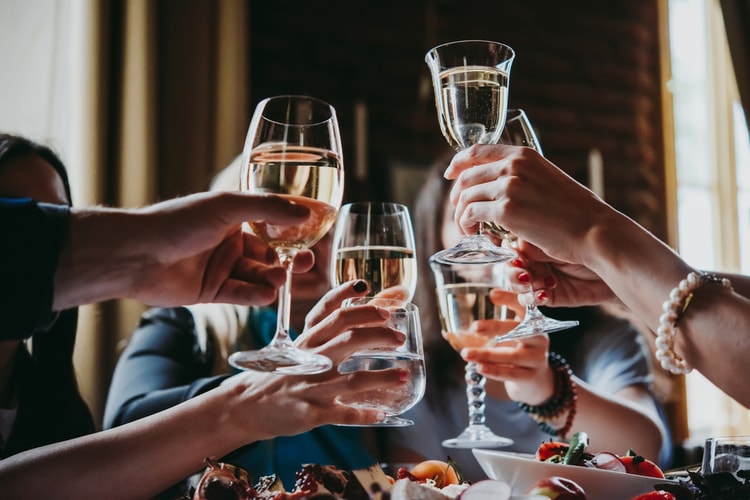
As your guests arrive it’s going to be tempting to greet them with a glass of that New Years standby, sparkling wine. Resist the temptation and save those bubbles for later in the evening. Instead, start your thirsty guests off with something light, delicious and easy to sip as they get their bearings and greet their fellow celebrants.
The greeting calls for a welcoming white wine. Riesling is perfect. Its crisp, flavorful profile and variety of styles makes it the perfect choice to put in your guests hands upon opening the door. Great Rieslings are produced in Germany, Washington State, California, Michigan and New York. Equally important, Riesling is one of the best value wines on the planet. You can find a great bottle for between $10 and $20. The alternatives to Riesling are other crisp, lively whites such as Sauvignon Blanc, Pinot Grigio or Gewurztraminer.
Wines for Dinner or Grazing
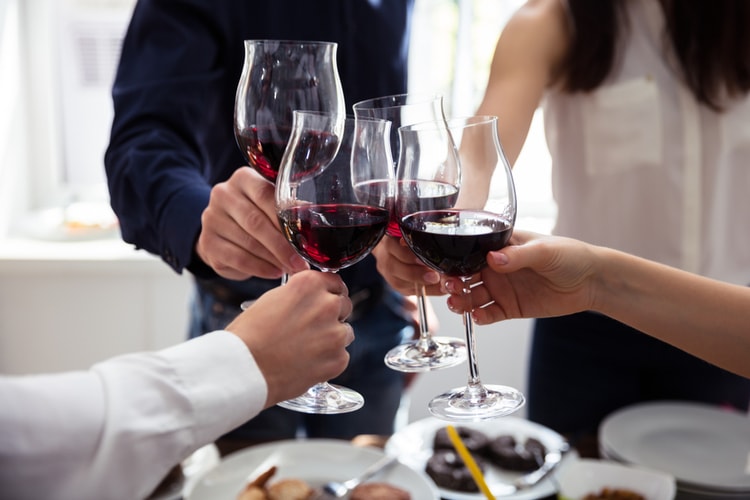
Whether you’re serving a sit down dinner, stand-up buffet or just hors d’oeuvres to your guest should determine the next set of wines you have on hand. If you are serving a buffet or just hors d’oeuvres then you can really get adventurous and give your guests a great selection of wines to drink as they meander, chat, eat, and celebrate.
As it’s likely to be cold, make sure you stock up on some warming, rich red wines. Moreover, provide your guests with a variety to choose from. Think Oregon Pinot Noir, Sonoma County Merlot or Zinfandel, Napa Valley Cabernet Sauvignon, a Red Blend from France’s Rhone Valley or Argentina Malbec—all great options for warming the body and soul. Putting a variety of different wines on the beverage table also sparks conversation. High-quality versions of all these wines can be purchased at affordable prices. Finally, be sure to put a chilled white wine on the beverage cart. Chardonnays from California or White Burgundy are perfect choices given their normally rich profiles.
If you are hosting a sit down dinner you don’t need as many choices for your dinner companions to choose from. In fact, simply choose a number of wines that match the number of courses you are going to be serving. If it’s a salad or hors d'oeuvres course, a main course and dessert, you’ll need 3 wines. Here’s the simple rule for matching the wine to the food: The lighter the food, the lighter the wine. The heavier the dish, the heavier the wine. It’s simple.
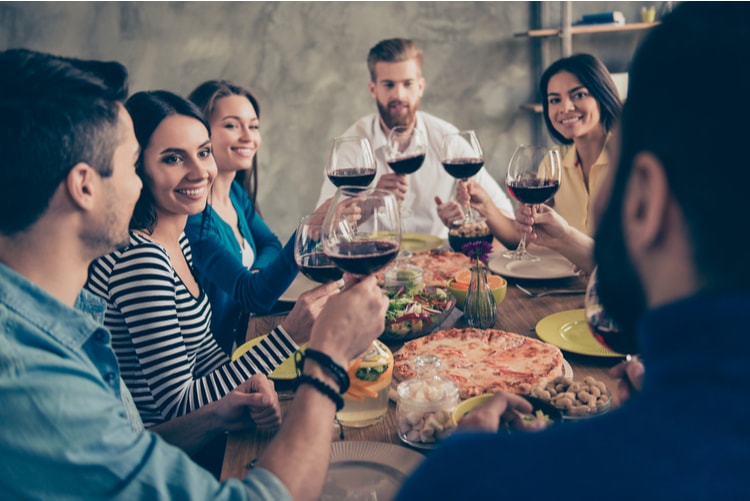
Chardonnay, White Burgundy and Sauvignon Blanc are lighter white wines to serve with a salad or even a soup course, particularly if that soup is creamy. As you move into the main course, if you’re serving a substantial protein then match the wine to it. With beef, pork or even duck you can put a Cabernet Sauvignon, red blend or red Bordeaux on the table. If your main course is somewhat lighter, say poultry in the form of turkey or chicken, you can make an impression with the lighter Pinot Noirs from New Zealand and California. Alternatively, Grenache from Spain is a perfect choice. Depending on how many guests you are serving, remember that you’ll need enough of each wine for about a glass and a half for each person.
Dessert Wine
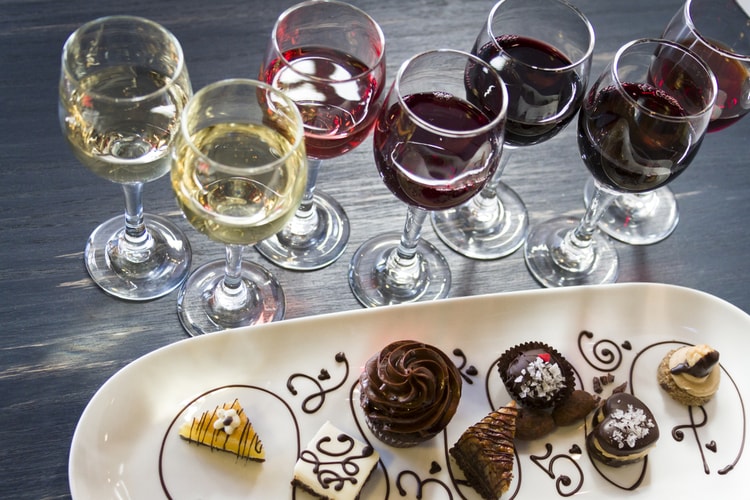
Say “Yes” to a dessert wine to go with your final course. No celebratory dinner is complete without a special wine to finish it off. You can spend a fortune on great sweet wines, but you don’t have to. Look for Late Harvest Riesling from Washington State or California. This sweet, golden version of Riesling is delicious with cakes, cookies, pie and even over ice cream. Alternatively, if you are serving a chocolate or other rich dessert, try to find a port, that ruby colored, sweet, raisiny wine that is stuffed full of flavor. Remember, folks will drink less sweet wine. So plan on no more than a glass per person.
The Sparkles
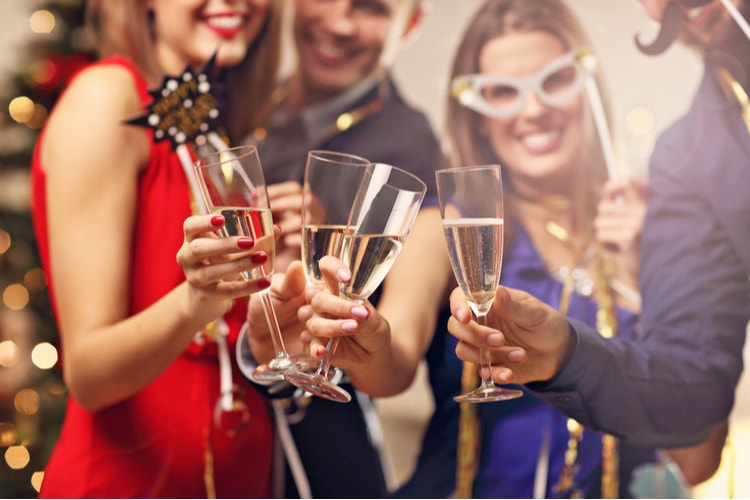
It’s difficult to imagine a New Year’s Eve celebration without sparkles in the glass. There are a variety of theories as to how Sparkling Wine became associated with New Year’s Eve, but just one look at a flute with bright, rising bubbles and the feel of that effervescent on your tongue should explain everything.
Save the sparkle for the Midnight Toast. But which sparkling wine should you serve? Champagne is the tradition. Produced only in the Champagne region of France, this wine is deservedly famous. Its tight, small bubbles, and yeasty-citrus character make it unique in the world. Good Champagne can easily run you between $40 and $100 per bottle. Great Champagne can set you back upwards of $500 a bottle.
There are, however, many outstanding alternatives that won’t cost you a car payment. Consider California or Washington State Sparkling wine, both are often beautiful renditions of Champagne. Prosecco from Italy is extremely popular now and also a great alternative. Cava, the sparkling wine produced in Spain, can be delicious and affordable. Another great alternative is dry or semi-dry sparkling cider from New York, Oregon, Washington or California.
As a reminder, you don’t need Champagne flutes to serve sparkling wine. Those tall, tulip-shaped glasses definitely make an impression as they show off the bubbles rising to the top — and, for this reason, they are preferred — but a regular wine glass is also perfectly suitable for the occasion.
Where to Find the Wines
If you need help procuring your New Year’s Eve wines I highly recommend you find a nearby specialty wine retailer. This is where you’ll find folks with a wide selection of special wines and who know how to listen to the customers.
Once your track down the right wine shop, feel free to tell the clerk how many people you’ll be having over, whether it’s a sit down dinner or more casual affair and be clear about how much you want to spend overall or on each bottle. The clerk will be able to estimate how much wine you need and guide you in your selections. If you know what you want and feel like you don’t need any help with your wine selections, consider looking online. There are a number of outstanding online stores, as well as top wine club subscription services that allow you to discover new wines you might not have thought about .
Importantly, don’t run out of wine on New Year’s Eve. Buy a little bit more than you need. No one wants to have to make a wine run in the middle of the celebrations.
About the Really Good Stuff
Finally, if you have that great bottle of wine you have been saving for a special occasion or if you want to splurge on something very unique for the evening, consider waiting until after the midnight sparkling wine toast to pull it out and serve. Save that special bottle for the part of the evening when things calm down and you want to look back on the past and contemplate the future.
The point of a New Year’s Eve celebration is to gather with friends and family and welcome in the New Year with all the opportunity and hope it represents. It shouldn’t be an occasion marked by stress over which wines to serve. Keep it simple and keep it delicious and you can deliver an eye opening wine experience along with a great party.
Tom Wark writes for Top10.com. He has worked in the wine industry for 30 years and has become a go-to source for wine information via his blog, “Fermentation: The Daily Wine Blog”. Wark’s blog has won multiple “Best Wine Blog” and “Best Wine Business Blog” awards at the American Wine Blog Awards. He has written for numerous publications and has been a featured speaker at wine industry events.
